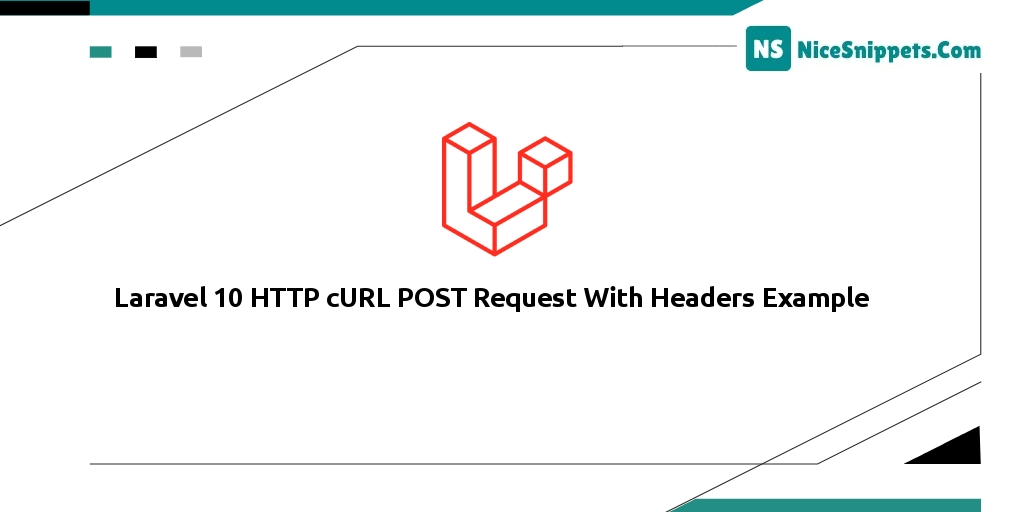27-Apr-2023
.
Admin

Hi Friends,
I am going to explain to you an example of Laravel 10 HTTP cURL POST Request with Headers. This tutorial will be easy to understand and implement. It will give you a complete idea of Http curl request integration with headers in Laravel 10.
Here, I will give you simple examples of HTTP facades to work with curl requests and their methods. Curl request is very useful to send data in various request types. How to send headers with curl requests we saw in this article.
We will see cURL requests with POST data using HTTP and GuzzleHTTP. To understand cURL we have taken fake data API urls from here Fake API URL.
cURL is a tool to transfer data from or to a server, using one of the supported protocols (HTTP, HTTPS, FTP, FTPS, GOPHER, DICT, TELNET, LDAP or FILE).
Let's see bellow example:
Step 1: Download Laravel
Let us begin the tutorial by installing a new Laravel application. if you have already created the project, then skip the following step.
composer create-project laravel/laravel example-app
Step : 2 - Create Controller & Add cURL Concept
php artisan make:controller SiteController
It will create a file SiteController.php in the /app/Http/Controllers folder.
Open SiteController.php and write this complete code into it.
cURL Request with POST Data Using HTTP –
<?php
namespace App\Http\Controllers;
use Illuminate\Http\Request;
use Illuminate\Support\Facades\Http;
class SiteController extends Controller
{
public function index()
{
// URL
$apiURL = 'https://jsonplaceholder.typicode.com/posts';
// POST Data
$postInput = [
'title' => 'Sample Post',
'body' => "This is my sample curl post request with data",
'userId' => 22
];
// Headers
$headers = [
//...
];
$response = Http::withHeaders($headers)->post($apiURL, $postInput);
$statusCode = $response->status();
$responseBody = json_decode($response->getBody(), true);
echo $statusCode; // status code
dd($responseBody); // body response
}
}
Output:
array:4[
"title"=>"Sample Post"
"body"=>"This is my sample curl post request with data"
"userId"=>22
"id"=>101
]
cURL Request with POST Data Using GuzzleHttp –
To work with GuzzleHttp, we need to install the Guzzle package into the Laravel application. Here is the given command to install guzzlehttp package into the application –
Step : 3 - Install guzzlehttp/guzzle Package
Open the project into the terminal and run this command.
composer require guzzlehttp/guzzle
This package will install guzzlehttp and also updates the composer.json file at the root.
"require": {
//...
"guzzlehttp/guzzle": "^7.0.1",
//...
},
app/Http/Controller/SiteController.php
<?php
namespace App\Http\Controllers;
use Illuminate\Http\Request;
use Illuminate\Support\Facades\Http;
class SiteController extends Controller
{
public function index()
{
// URL
$apiURL = 'https://jsonplaceholder.typicode.com/posts';
// POST Data
$postInput = [
'title' => 'Sample Post',
'body' => "This is my sample curl post request with data",
'userId' => 22
];
// Headers
$headers = [
//...
];
$response = Http::withHeaders($headers)->post($apiURL, $postInput);
$statusCode = $response->status();
$responseBody = json_decode($response->getBody(), true);
echo $statusCode; // status code
dd($responseBody); // body response
}
}
Output:
array:4[
"title"=>"Sample Post"
"body"=>"This is my sample curl post request with data"
"userId"=>22
"id"=>101
]
I hope it can help you...
#Laravel 10